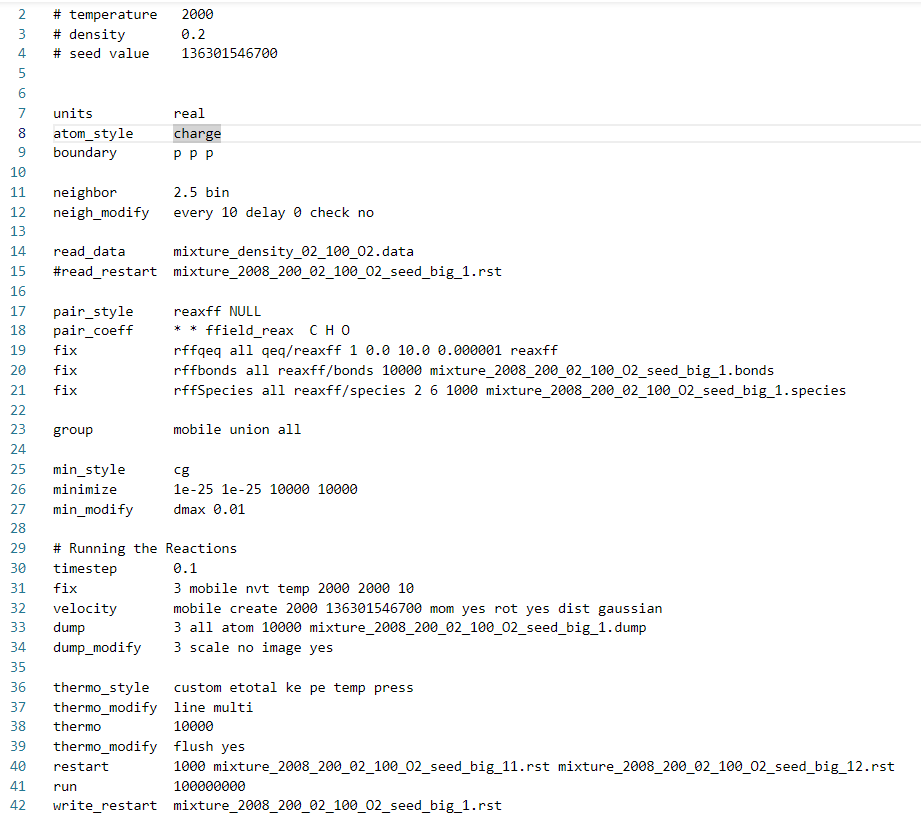Hello,
I am doing research about soot formation using LAMMPS. I am currently investigating the impacts of various factors (density, temperature, REAXFF force field potential, seed value of velocity command, initial configuration) on soot formation in a system. I am currently attempting to alter my simulation by varying the seed value of the velocity command. For all of my previous runs, I have been using a seed value that was suggested by one of my mentors. I have now attempted to rerun my simulation using a new seed value. I have researched documentation regarding the seed value and its purpose, but I have not been able to find much information about how to select a seed value. The general advice appears to be that a larger seed value is better.
My system consists of the following molecules:
- C9H7 (1-indenyl): 2 molecules
- H: 20 molecules
- OH: 2 molecules
- C2H3 (Vinyl): 3 molecules
- C3H3 (Propargyl): 3 molecules
- C6H5 (Phenyl): 2 molecules
- C10H8 (Naphthalene): 2 molecules
- C2H2 (Acetylene): 100 molecules
- C2H4 (Ethylene) : 75 molecules
- H2: 15 molecules
- O2: 350 molecules
- Total: 1227 atoms
The seed value I had been initially using was: 1645103637
The seed value I attempted to use was: 136301546700 which I chose arbitrarily by reversing the digits of the original seed except for the first and last digit and adding two zeros.
When I attempted to run the case with the larger seed value, I received the following error message:
“ERROR: Illegal velocity create command”
I looked into the 21 Nov 2023 LAMMPS documentation to read more about this error message, but I did not find it on the list of error messages. I thought that perhaps my seed value was too large, so I removed a zero (new seed: 13630154670) and attempted to rerun the simulation, and it ran without any issues.
In addition to reporting this type of error message so it can be added to the documentation, I have the following questions:
- From my research into the documentation, I understand that the purpose of the seed value is to allow results to be reproducible. Is there a methodology to selecting a seed value? Is a bigger seed value always better than a small one?
- How is the seed value utilized in the velocity command? Is there a size restriction because it appears there may be based on the error message I received.
For reference, I am using 8 processors to run my simulation, and I am using the 29 sep 2021 version of Lammps.
Additionally, here is my input file for your reference:
Thank you in advance for any help that can be provided.
